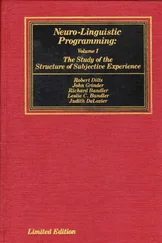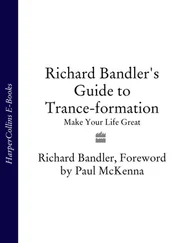For example, I drove yesterday from … Santa Cruz, California, where I live … up and over the Santa Cruz mountains … and back down the other side … to the airport in San Jose. And as has happened so many times when I am driving … especially along a route which I know … a great deal about … I have driven it a number of times … the last thing I remember … before arriving at the airport I , . was turning onto Highway 17, the freeway that I took all the way across the Santa Cruz mountains to San Jose to catch the airplane. And I evidently drove quite safely … and during the drive … the monotony of the road … I assume … induced in me a sort of automatic … and unconscious response … which I could trust …to get me safely from where I began … to where I wanted to go. …
And that was a great deal … like another experience which I'm sure you and many people listening to me have shared … which is the experience of sitting in a lecture … where attendance is mandatory … but the person who is talking …is not a very exciting speaker . someone who is simply … talking in a way that induces a sense of … boredom … and offering you words without a great deal of attention to stimulating you… . And in such experiences I've noticed my mind tends to wander … to other places and times … which are less boring and somehow more stimulating than my present environment… .
Or the experience I've had in my life …of walking through the woods … on a quiet day… . Some of the prettiest areas in the part of the country that I live in … are the marvelous redwood forests… . I've heard people liken … the visual impact … of those redwood forests …to being in a cathedral …a large church of some kind … and the sense of majesty … and calm … serenity that they bring… . And as I walk through the redwood forests … one thing about redwood forests …is the fact that they are so homogeneous … that they do not support … much in the way of wildlife, especially birds …so often there is a majestic sort of silence associated … with … walks through the redwood forest … and although there is not a lot of variation …in the experience I have … as I do walk through them …I certainly have a sense of calm … and relaxation … which I deeply … appreciate, What one thing do those three experiences have in common? Woman: Relaxation, solitude. Man: Serenity. Woman: Repetition.
They are repetitious. They are monotonous. And if any of you were looking around as I was talking, you could see the physiological signs that you're learning to associate with trance developing in most of you. So a very natural and covert way of leading a person from the state of consciousness she is in toward an altered state, is to tell a series of stories or little episodes as I did, which have in common only the kind of response that you want to elicit from that person. At that point it is entirely a question of how acute your own sensory apparatus is, so that you can notice whether you have achieved the kinds of responses you want. You tell as many stories as necessary to achieve the response. You can talk about riding in an elevator. Almost everybody goes into a trance in an elevator. They look up at the numbers and then their pupils dilate and they become immobilized. In elevators the only place it is culturally acceptable to look is at the numbers or at the walls or the floor.
Another example: What happens when you are driving along a street and you drive up to a red stop light? You stop. When the car stops moving, you stop moving.
What are other naturally occurring examples of trance states?
Woman: Watching a movie.
Man: Sitting in church.
Yes, although sitting in church is getting less universal. A lot of people haven't had that experience and won't be able to identify with it, but it's a good one for those who have.
Woman: Watching television.
Yes. If you want to pass information to your kids—if you'd like them to clean their rooms or something—get them while they're watching TV. They're going to be gone: living what's going on in the TV show. So you sit next to them and say—softly so you don't disrupt them— u… and you have this overwhelming compulsion to… ,"
Man: Chronic mental hospital patients watch television all day. I never thought of reaching them there.
You might try it that way.
When we were first learning hypnosis, Richard Bandler and I used to play a game with each other. We'd get a group of "naive subjects" — people who had never been officially induced into a trance. Then we would challenge ourselves to get them from the present state to a somnambulistic trance state in a minimum number of steps. One of the first things I always asked for was a meditative state. Meditation is a very altered state relative to normal consciousness. I would ask if I could be allowed the privilege of watching them go into the meditative state without interfering in any way. They would go into the meditative state—a dramatically altered state.
When they were there, 1 would say "With your permission, I will now offer a suggestion for you to move from this meditative state, leaving its integrity fully protected, to a state called a general somnambulistic trance, from which we can then begin to make the changes you have asked for." I make a clear distinction between trance and meditation, because if there is not a separation between what is called meditation and somnambulistic trance, every time they meditate they will go back into the trance state. I don't want to connect the two, unless I have a specific reason to.
If and when you do official ritualistic kinds of hypnosis, I suggest that you wait until you have already covertly succeeded in getting a couple of trance states with the client. Let me give you the most common example. Somebody comes in and demands that you do hypnosis with her for a presenting problem and you say "Of course. However, before we begin there are a couple of things I need to know." •Then you induce a series of trances. You say something like "Well, the first thing to do is to check your ability to recall in detail information that I'm going to need for your case history." So you induce a trance by taking a case history. You ask "Now, where were you born?" and you have her describe in detail the house in which she lived, and the sounds it made, the feelings she had there, etc. And, of course, she is gone; she age–regresses in order to get the detailed information about her past. One description of trance is getting the person independent of her present time/space coordinates. This fits that definition. The only link between her and the present time/space coordinates is your voice. [Along all other dimensions, she is somewhere else.
Regression is considered one of the "deep trance" phenomena by traditional hypnotists. It's actually something you get all the time. Gestalt therapists typically get deep trance phenomena automatically, much more easily than a hypnotist, and yet most of them would resist the label "hypnosis." All over the world people are looking at empty chairs and seeing their mothers or their fathers and talking to them and hearing responses. Those are positive auditory and visual hallucina–Egns. They constitute deep trance phenomena. But it's not labeled that way, so there's no resistance involved.
By the way, just as a teaching device, let me make a point here. If you ever lecture on hypnosis, of course the group is going to be going in and out of a trance. The only way that the group can make sense of your descriptions of hypnosis and trance is to access their own experiences that fit those descriptions. Depending on how confident you are in your own personal power, you will get perhaps a hundred people in deep trance rather rapidly- -or not, depending upon what outcome you want. There isn't an easier subject in the world to lecture about, because as you talk about it, it is happening.
Читать дальше











